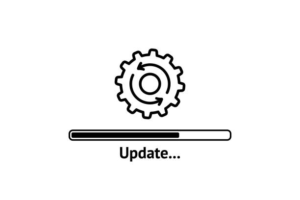In the rapidly evolving technological landscape, staying abreast of the latest developments is essential for both professionals and enthusiasts. As the tech industry pushes boundaries and redefines possibilities, the quest for up-to-date information becomes ever more vital. Fortunately, myriad innovative solutions have emerged to cater to this need, offering a wealth of resources and knowledge at our fingertips.
This article delves into popular solutions, exploring their unique features and benefits and how they keep us abreast of the ever-changing tech world.
Technology and software are pivotal in shaping businesses, industries, and our daily lives in today’s fast-paced digital landscape. From cutting-edge software packages to groundbreaking hardware advancements, the world of technology is constantly evolving.
Consequently, staying abreast of these rapid developments becomes increasingly imperative.
This article aims to provide actionable strategies for professionals and individuals to effectively navigate the ever-changing landscape of technology and software packages. By understanding the importance of staying current and adopting the right approach, readers can position themselves to thrive in an increasingly dynamic digital world.
Let’s start with the definition of technological changes.
Understanding Technological Changes
Technological changes encompass a wide array of developments that shape the world of technology and software. It refers to the ongoing innovation, transformation, and adaptation process within the technological sphere.
These changes can appear in diverse forms, including hardware advancements, software updates, and the emergence of disruptive technologies.
Understanding technological changes involves acknowledging their iterative and progressive nature, where advancements build upon previous innovations to drive continuous improvement.
The Iterative Nature of Technological Changes
The iterative nature of technological changes lies at the core of its evolution. Advancements in technology are often built upon prior developments, forming a continuous cycle of improvement and innovation.
For instance, the growth of computer processors follows a series of iterations, with each generation delivering increased performance, reduced power consumption, and enhanced capabilities.
Similarly, the software undergoes iterative updates, with developers refining features, fixing bugs, and responding to user feedback. Through this iterative approach, technology stays relevant, efficient, and secure, adapting to the ever-changing needs of users and industries.
Now we explore the need to stay updated on technology and software changes.
Why We Need to Keep Up with Technology and Software Changes
Remaining current with the latest technological advancements is of utmost importance for diverse reasons.
1. Enhancing Productivity and Efficiency

Moreover, individuals with the latest software skills can accomplish tasks more efficiently, whether managing personal finances, creating digital content, or collaborating on projects.
Being proficient with cutting-edge software empowers professionals to excel in their roles and deliver high-quality results.
2. Embracing Innovation and Remaining Competitive

Whether adopting cloud-based solutions, leveraging artificial intelligence, or integrating Internet of Things (IoT) devices, organizations that proactively adapt to technological shifts are better positioned to thrive.
Innovation is not limited to corporations; it also extends to individual careers. Technological advancements are causing job roles to evolve, and new positions are emerging as a result.
By staying current with the latest tech trends, professionals can remain relevant and seize career growth and advancement opportunities.
3. Seizing New Opportunities
New technologies open up novel avenues for growth and expansion. Being aware of emerging trends allows entrepreneurs and startups to identify untapped markets and create disruptive products or services.
Being at the forefront of technology can attract investors, partners, and customers eager to join innovative ventures.
On an individual level, staying updated with the latest software packages can lead to more diverse skill sets, enabling professionals to explore new career opportunities.
Cross-disciplinary skills, such as data analysis, design, or programming, can make individuals versatile and adaptable in a rapidly changing job market.
4. Addressing Security and Compliance
Software updates frequently incorporate crucial security patches that safeguard against potential vulnerabilities and cyber risks. Neglecting these updates exposes individuals and organizations to security breaches, data theft, and other cybercrimes.
By keeping your security measures up-to-date, you can help to protect your sensitive information and ensure the integrity of your data.
Furthermore, by staying updated with software changes, businesses can ensure they comply with industry standards and legal obligations, reducing the risk of penalties and legal issues.
Consequences of Falling Behind
Failing to keep up with advancements in technology and software packages can have far-reaching consequences for individuals, businesses, and industries.
Below are some major consequences of falling behind.
1. Reduced Productivity and Efficiency
Using outdated technology and software can lead to decreased productivity and overall efficiency.
Older software may lack essential features and optimizations that newer versions offer, making tasks more time-consuming and complex.
As a result, individuals and organizations may struggle to keep up with competitors who have embraced the latest tools, leading to a loss of market share and potential revenue.
2. Increased Security Risks
Obsolete software is more prone to cyberattacks and security breaches.
Hackers and malicious entities continuously exploit weaknesses in old software versions, making them prime targets for data theft, ransomware attacks, and other cybercrimes.
A sole security breach can result in severe repercussions, including financial losses, harm to reputation, and legal liabilities.
3. Missed Opportunities for Innovation
Staying updated with technology and software changes is crucial for unlocking new opportunities for innovation and growth.
By falling behind, individuals and businesses may miss out on adopting emerging technologies that could revolutionize their industry or streamline their operations.
Embracing innovative solutions early on frequently offers a competitive edge and lays the groundwork for future success.
4. Obsolescence and Market Relevance
In technology-driven industries, being outpaced by competitors can lead to obsolescence and loss of market relevance.
Customers and clients are increasingly attracted to companies that provide contemporary and effective solutions.
Failure to keep up with technology changes can result in a shrinking customer base, as customers gravitate toward more forward-thinking businesses.
4. Inefficient Resource Utilization
Using outdated technology can lead to inefficient resource utilization.
Older hardware and software may consume more power, require frequent maintenance, and have higher downtime, leading to increased operational costs.
In contrast, adopting newer, energy-efficient technologies can reduce resource consumption and lead to cost savings in the long run.
5. Limited Access to Support and Updates
Software providers often discontinue support and updates for older versions as they focus on developing and maintaining newer iterations.
Without access to updates and technical support, users of outdated software may encounter more challenges in troubleshooting and resolving technical problems.
6. Impact on Employee Satisfaction
In organizations, employees may become frustrated and demotivated if they work with outdated tools and software.
A lack of modern technology can hinder their ability to perform tasks efficiently, leading to lower job satisfaction and potential talent attrition.
Overcoming Challenges in Adopting New Technology
While keeping up with technological changes is essential, it often comes with challenges. Adapting to new technology and software packages can be daunting for both individuals and organizations.
Nevertheless, with a suitable approach, these challenges can be surmounted, allowing one to fully harness the benefits of technological advancements.
1. Resistance to Change
Resistance to change stands as one of the most prominent obstacles to adopting new technology. People are often comfortable with familiar systems and routines, and learning something new can be intimidating. To overcome this we can,
Encourage a culture that fosters innovation.
Encourage a culture that embraces innovation and continuous learning within the organization. Leaders should emphasize the importance of staying updated and creating an environment where employees feel motivated to explore new technologies.
-
Communicate the Benefits
Effectively communicate the advantages of adopting new technology to all relevant stakeholders. Illustrate how the adoption of new technology will enhance productivity, streamline processes, and generate fresh opportunities for growth and development.
-
Provide Training and Support
Provide thorough training and continuous support to aid employees in a seamless adaptation to the new technology. Adapt training programs to cater to the unique needs and skill levels of each participant.
2. Compatibility and Integration Issues
Compatibility and integration issues can arise when adopting new software packages, especially in complex IT environments. To address these challenges:
-
Conduct Compatibility Testing
Before implementing new software, conduct thorough compatibility testing to ensure it seamlessly integrates with existing systems and hardware.
-
Plan for Transition
Develop a comprehensive transition plan that outlines the steps for implementing the new technology while minimizing disruption to existing operations.
-
Seek Expert Consultation
When in doubt, seek the advice of IT experts or consultants specializing in technology integration. Their expertise can guide in overcoming potential obstacles and ensure a seamless transition.
3. Cost Considerations
Adopting new technology often has financial implications, including the cost of licenses, hardware upgrades, and training. To manage costs:
-
Budget Planning
Include technology upgrades and software updates in the organization’s budget planning. Allocating funds for these purposes ensures that necessary resources are available when needed.
-
Explore Cost-Effective Alternatives
Look for cost-effective solutions that offer the required functionalities while maintaining high quality. Some software packages have free or open-source alternatives suitable for specific use cases.
4. Ensuring Data Security
As technology evolves, so do potential security risks. When adopting new software or embracing emerging technologies:
-
Conduct Security Assessments
Perform in-depth security assessments to identify possible vulnerabilities and threats linked to the new technology.
-
Implement Robust Security Measures
Data breaches and cyber threats are a growing problem, but there are steps you can take to protect your data. Regular data backups and encryption are two of the most effective ways to do this.
-
Stay Updated with Security Patches
Ensure regular updates of software packages to have the latest security patches and bug fixes.
Conclusion
In conclusion, the digital age rewards those who embrace change and continuously seek to enhance their technological prowess. By staying current with technology and software packages, we empower ourselves to be agile, innovative, and adaptable. The journey of keeping up with technological changes is continuous, requiring a growth mindset, resilience, and a commitment to lifelong learning. As we harness the power of technology to shape our lives and businesses, let us embrace the boundless opportunities it presents and chart a course toward a brighter, more connected, and technologically advanced future.















